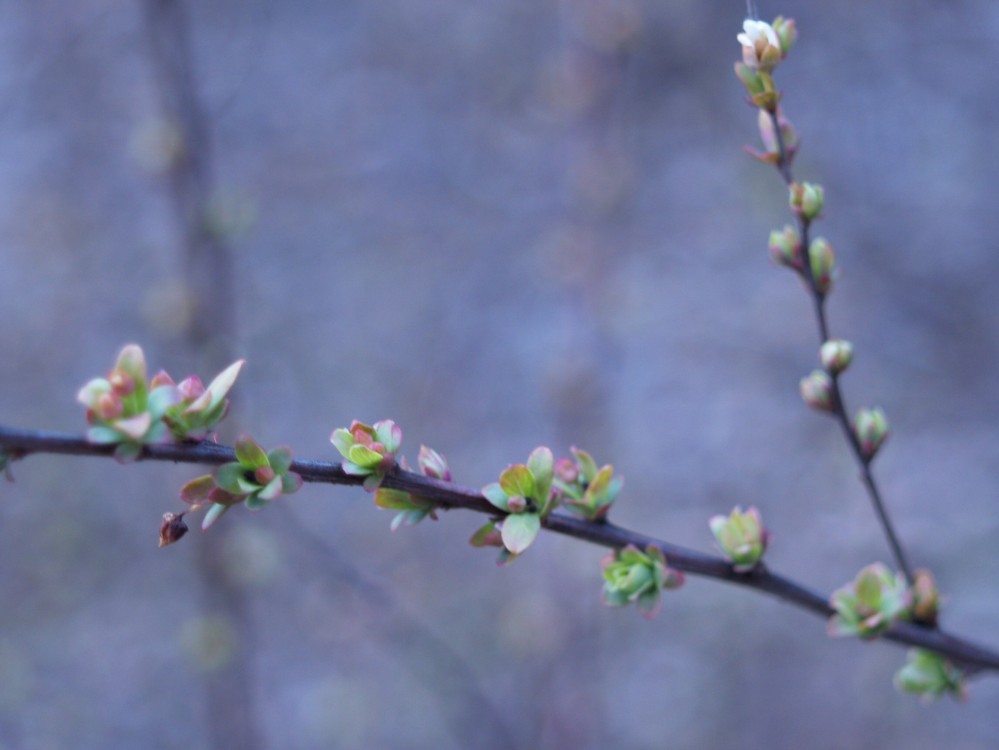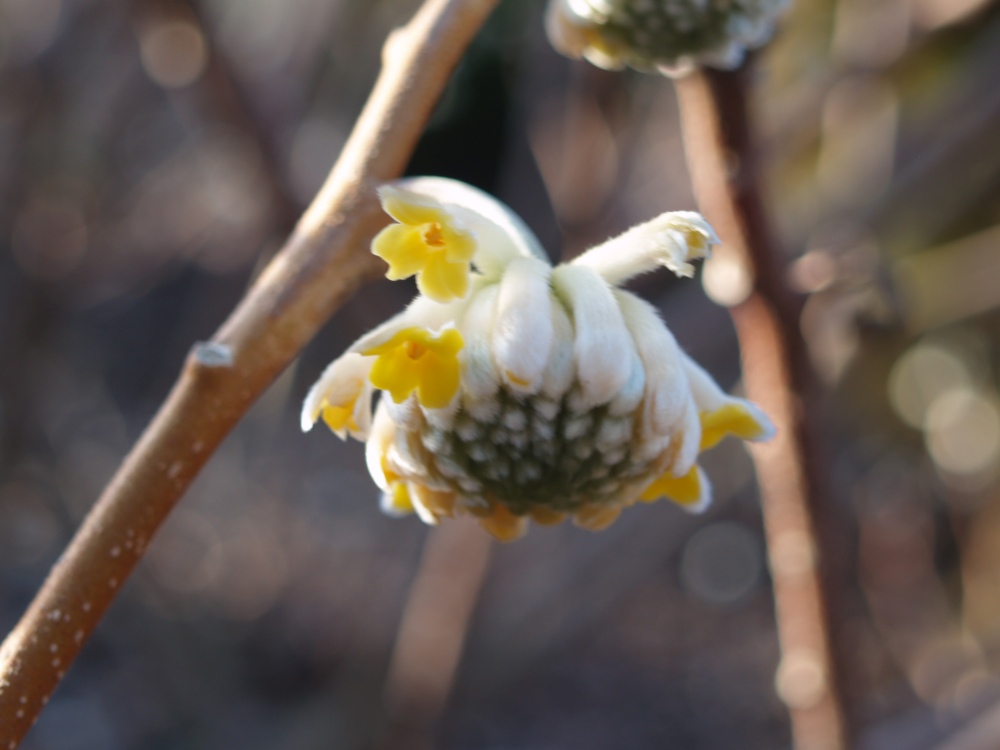‘Ogon’ spirea (Spirea thunbergii ‘Ogon’) is unlikely to flower this spring. It flowered modestly with the warm temperatures of late December and early January, and then began to leaf before cold put an end to the premature growth. A less sturdy shrub would be troubled when newly emerging foliage is damaged by repeated freezes, but at the start of March there are tiny new leaves and it appears ‘Ogon’ will not have a problem.

‘Ogon’ is a perfectly descriptive name for this coarsely branched shrub with excellent, colorful foliage, and matters are only confused by marketers who repackage this mediocre spirea as ‘Mellow Yellow’ or ‘Gold Thread’. I have given ‘Ogon’ a space much too prominent for its unmannerly habit, and after flowering each spring I consider chopping it out, or at least transplanting it to a less obvious spot. No doubt, there are gardeners who have fallen head over heels for ‘Ogon’, and please do not take personally that you adore a shrub that is undeserving of any more than a single descriptive name.

The narrow, yellow leaves of ‘Ogon’ fool the gardener (at least this gardener) into believing the shrub will have a compact form. Instead, it is a bit wild, and should be planted more to the back or sides of the garden. Someday, I will get around to moving it, and then ‘Ogon’ will be a more likable character.

I am overjoyed that with this mild winter the paperbushes (Edgeworthia chrysantha) will flower after two years when all buds were ruined in the cold. Several years ago, paperbushes were reputed by references to be cold hardy only to zero, then a few years with slightly colder temperatures convinced some that it could tolerate cold to ten below. Not so. Shrubs that were once ten feet across were killed to three feet, though after two years these have rebounded to form rounded shrubs five or six feet across.

After two years without flowers, in two weeks the paperbushes will be in full bloom, and this is enough reason for any gardener to be thankful. While an early mild winter was followed by cold and deep mounds of snow, the cold was hardly severe, and even without blooms on ‘Ogon’, there will be plenty of flowers.